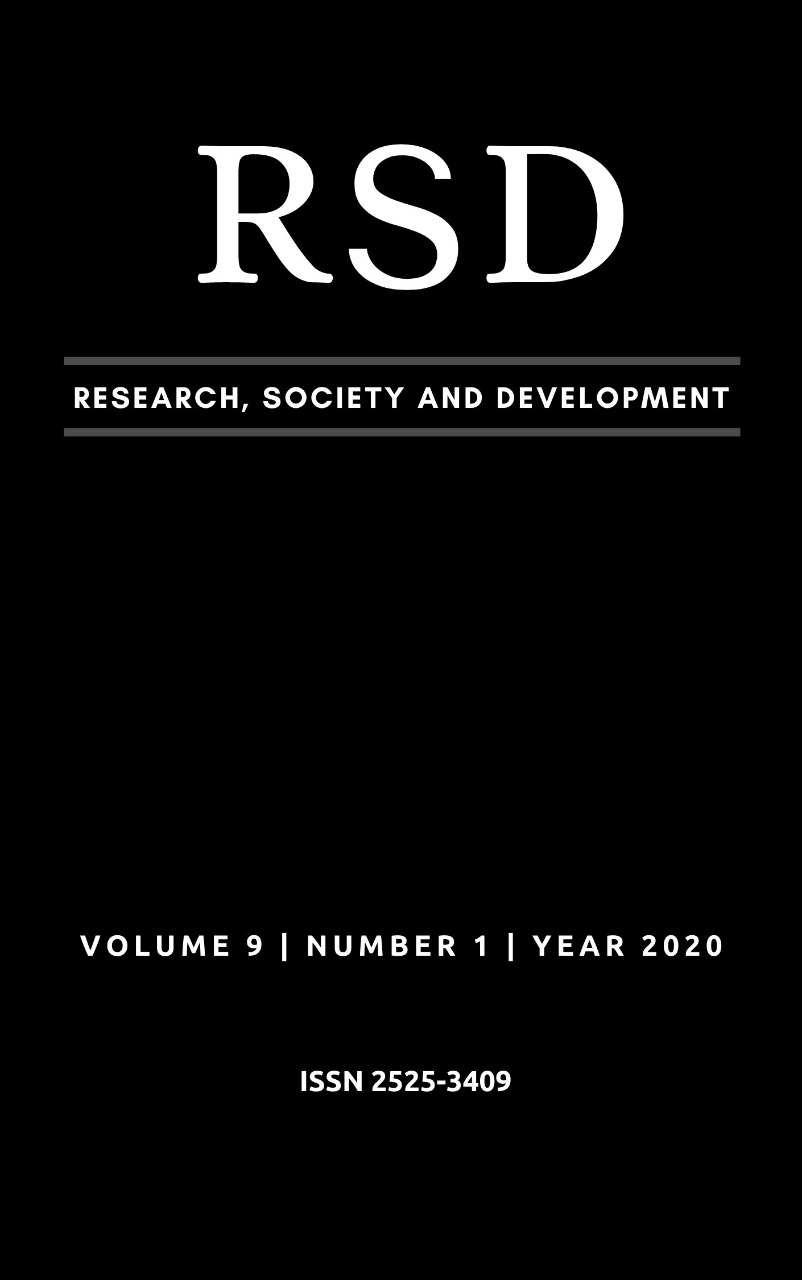Cartografia inclusiva: o uso de mapas táteis por alunos com deficiência visual no ensino de Geografia
DOI:
https://doi.org/10.33448/rsd-v9i1.1756Palavras-chave:
cartografia, tátil, inclusão, mapas.Resumo
O presente trabalho possui como objetivo central otimizar o ensino de Geografia para alunos com deficiência visual através do uso da cartografia por meio da elaboração e utilização de mapas táteis. Partimos do pressuposto que a aplicação de mapas convencionais não atende às necessidades das pessoas cegas ou com perda parcial da visão, deste modo, compreendendo a importância da cartografia no cotidiano dos indivíduos, buscamos alternativas viáveis que possibilitem a inclusão destes alunos em sala de aula. Durante as intervenções realizadas em conjunto ao programa Residência Pedagógica, no núcleo da Universidade Federal do Rio Grande Norte (UFRN), em parceria com o Instituto Padre Miguelinho - Natal/RN-Brasil, confeccionamos mapas adaptados para serem utilizados nas aulas de Geografia por alunos que não possuem a visão como percepção. À vista disso, propomos como procedimento metodológico a construção de materiais didáticos a partir da descrição das dificuldades enfrentadas pelos alunos, os quais, durante o desenvolvimento do trabalho, foram ouvidos a fim de logramos êxito no processo de inclusão destes nas aulas regulares. Após um longo processo e inúmeras tentativas, foi confeccionado um mapa com texturas diferentes, tinta alto relevo e completamente legendado em braile. Ao aplicar o material produzido durante os atendimentos realizados na sala de recursos multifuncionais da escola, os resultados foram promissores, tanto o aluno com baixa visão, quanto a aluna que possui cegueira total puderam ler o mapa sozinhos, apenas sob a nossa supervisão.
Referências
Base Nacional Comum Curricular /MEC. (2018). Acessado em 12 de novembro de 2018, Disponível em http://basenacionalcomum.mec.gov.br.
Carvalho-Freitas, M. N. (2017). A inserção de pessoas com deficiência em empresas brasileiras. [Tese Doutorado]. Universidade Federal de Minas Gerais, Belo Horizonte, Minas Gerais.
Goffman, E. (1998) Estigma: notas sobre a manipulação da identidade deteriorada. Rio de Janeiro: LTC Editora;
Jacob, C. (1992) L’empire des cartes: approche théorique de la cartogrhaphie à travers l’histoire. Paris: Albin Michel.
Loch, Ruth E. N. (2008). Cartografia Tátil: mapas para deficientes visuais. Portal da Cartografia. v.1 (n.1). 35–58. Disponível em https://www.researchgate.net/publication/277156942_Cartografia_Tatil_mapas_para_deficientes_visuais.
Martins, Lúcia de A. R. (2011) Fundamentos em Educação Inclusiva (p. 51). Natal, RN: EDUFRN.
Nunes, Débora. (2013) Educação Especial: um pouco de história. In Debora Nunes Educação Inclusiva, Natal: EDUFRN.
Ibgeeduca. (2019). Pessoas com deficiência. Acessado em 21 de setembro de 2019, disponível em https://educa.ibge.gov.br/jovens/conheca-o-brasil/populacao/20551-pessoas-com-deficiencia.html . Acesso em 21 de set. 2019.
Pessotti, Isaias. (1984) Deficiência Mental: da Superstição à Ciência. São Paulo: Queiroz; EDUSP.
Winzer, M. A. (2002) The history of special education: From isolation to integration. Washington, DC: Gaulladet University Press.
Downloads
Publicado
Edição
Seção
Licença
Autores que publicam nesta revista concordam com os seguintes termos:
1) Autores mantém os direitos autorais e concedem à revista o direito de primeira publicação, com o trabalho simultaneamente licenciado sob a Licença Creative Commons Attribution que permite o compartilhamento do trabalho com reconhecimento da autoria e publicação inicial nesta revista.
2) Autores têm autorização para assumir contratos adicionais separadamente, para distribuição não-exclusiva da versão do trabalho publicada nesta revista (ex.: publicar em repositório institucional ou como capítulo de livro), com reconhecimento de autoria e publicação inicial nesta revista.
3) Autores têm permissão e são estimulados a publicar e distribuir seu trabalho online (ex.: em repositórios institucionais ou na sua página pessoal) a qualquer ponto antes ou durante o processo editorial, já que isso pode gerar alterações produtivas, bem como aumentar o impacto e a citação do trabalho publicado.


